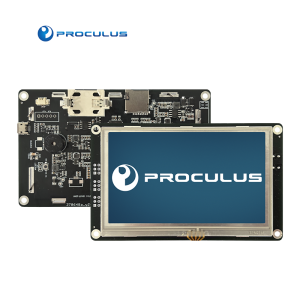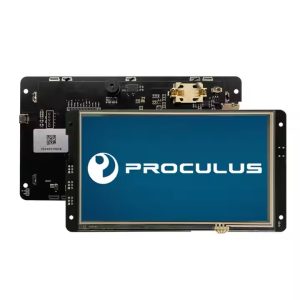The Future of Smart Displays: A Glimpse into the Evolution
As technology advances, smart displays are rapidly evolving to meet the growing demands of modern industries. They are becoming more intelligent, versatile, and user-centric, driving significant trends that are shaping their future.



Key Trends in Smart Displays
1.Higher Integration Future smart displays will integrate multiple components, such as advanced processors, sensors, and wireless modules, into a single, compact unit. This all-in-one approach will reduce complexity, improve reliability, and save space, making devices ideal for environments with stringent size and power constraints.
2.AI and Machine Learning Integration With artificial intelligence and machine learning becoming mainstream, smart displays will gain the ability to analyze data in real-time, anticipate user needs, and provide predictive maintenance alerts. These features will make them indispensable for applications ranging from industrial automation to personalized healthcare.
3.More Diverse and Unified Interfaces The next generation of smart displays will support a broader range of interfaces, such as CAN bus, Modbus, and wireless protocols like Zigbee and LoRa, alongside traditional HDMI, USB, and the most important, UART. A trend towards unified interface management will ensure seamless connectivity across devices and platforms.

4.Systematic GUI Ecosystems GUI systems are evolving into structured ecosystems, offering modular templates, real-time simulation tools, and enhanced cross-platform compatibility. These features will empower developers to design interactive, visually appealing interfaces faster and with greater precision.
5.Stronger Interactivity Interactivity will go beyond touchscreens. Advanced gesture recognition, haptic feedback, voice control, and even brain-computer interface (BCI) technologies are on the horizon, enabling natural and immersive interactions.
6.Sustainability and Energy Efficiency As the focus on sustainability grows, smart displays will incorporate eco-friendly materials and energy-efficient technologies, such as low-power e-paper displays and advanced backlighting systems. These innovations will align with global efforts to reduce environmental impact.
7.Cloud Connectivity and Edge Computing The integration of cloud connectivity and edge computing capabilities will make smart displays smarter. They will process data locally for faster response times while maintaining the ability to access cloud resources for deeper insights and remote updates.
Our Commitment to Innovation
At Proculus, we are driving these advancements forward, delivering smart display solutions that reflect the future of the industry. While we embrace cutting-edge trends, our products stand out through: 1.Optimized Performance: Our displays are designed for stability and reliability, ensuring consistent performance in demanding environments.2.Customizability: Tailored hardware and software solutions meet the unique requirements of various industries.
3.Comprehensive Support: From GUI development to integration with complex systems, we offer end-to-end support for seamless implementation.
4.Scalable Solutions: Whether for industrial automation, healthcare, or consumer electronics, our products can grow with your business needs.
5.Easy GUI solutions: We are keeping developing our GUI design software, UnicView Studio. It doesn’t need you to own coding skills and you can make wonderful GUIs easily.

Our team remains dedicated to advancing smart display technology, empowering businesses to thrive in a connected and intelligent world. The future of smart displays is bright, and we are excited to be part of this journey. Let us help you transform your vision into reality. Stay updated with our latest developments and innovations—follow us for more insights!

#SmartDisplays #FutureTech #Innovation #AI #Sustainability #EdgeComputing #Interactivity #NextGenSolutions

Category:
Author:
Client:
Date:
 English
English


